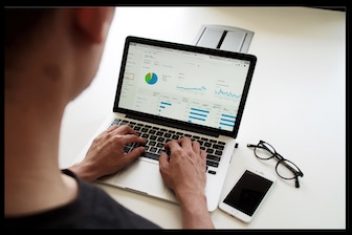There are many terms used in the world of IT that can be confusing. Two such terms are observability and monitoring. There is a lot of confusion about what these two terms mean.Many wonder how they differ and which one to use when. This article will clear up some misconceptions and explain both concepts and how they relate to each other.
What is Observability?
Observability is the ability to see and understand what’s going on in a system. When an application has good observability, you’ll be able to monitor what your application does while it runs easily.
This means you can see all requests across all components, log files for all components, metrics of all requests across all components, system-level performance data, etc.
Observability is critical in distributed systems because more moving parts make less functionality easier to understand when broken. It means that having access to detailed monitoring data for all components in a system can be crucial when troubleshooting.
What is Monitoring?
Monitoring is the ability to see that a system is running as expected.
Monitoring might not tell you why something happened or what the underlying cause was. It doesn’t mean you’ll be able to trace an error back to a specific component or request, and it definitely won’t give as much visibility into the inner workings of your system as observability.
IT Monitoring is different from observability in that it won’t necessarily provide detailed visibility into your system, but it will tell you if something breaks or stops working as expected.
Why Should I Care About Observability?
As a user, you probably care about the result: whether your application functions correctly. You want to know that when you press a button, the right thing will happen.
When it comes to monitoring vs. observability, you might have one question: Why can’t I just monitor what my system does and be done with it? Monitoring tools are essential in any environment because they provide visibility into what your applications do while running.
They tell you if everything is running smoothly, but they don’t reveal what’s happening behind the scenes.
Why Should I Care About Monitoring?
On the other hand, you might be asking yourself: Why would I need more than monitoring? Sure, it would be nice to have observability data to get a detailed look at what your application does while it runs, but having monitoring is better than not having anything at all, right?
The goal of observability tools isn’t to be a replacement for monitoring. Monitoring tells you if an application is running as expected and acts as a safety net in case your system starts to misbehave.
However, you should still collect detailed observability data even when your system seems to be running fine because it will help you uncover issues in the future.
How Are Observability and Monitoring Related?
Like monitoring, observability tools collect data about your system while it’s running. However, they provide much more detailed visibility into what’s going on in your system. In some cases, observability can provide metrics that are not available from a monitoring tool.
For instance, if you have an application that serves HTTP requests, your monitoring solution might be able to tell you how many requests hit a particular endpoint. In contrast, observability tools can provide metrics such as:
- What was the average response time of each request?
- How many resources did each request consume on the machine where it ran?
- What errors were raised?
- What events happened during the lifetime of each request?
It’s important to note that monitoring tools still have their place. They tell you that your application is running, but they don’t necessarily allow you to inspect what’s happening.
If you’re struggling to understand what’s happening in your application, whether it be because of the complexity or just want more detail about how well it is running, consider using observability tools.
While they won’t give as much visibility into your system as an observability tool will, monitoring data still has its place and can help provide a safety net for when things start to go wrong. If you need help figuring out which type of metrics would make sense for your business or organization.
If you like the content, we would appreciate your support by buying us a coffee. Thank you so much for your visit and support.



